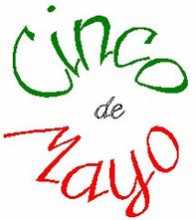Essential At-Home Bartending Equipment
There's no reason the casual drinker should have to compromise quality for convenience when having his or her favorite cocktails at home. All it takes is the right equipment, some simple techniques and proper ingredients to get results on one's own that are as good, or better, than those drinks offered at top-notch lounges. Here are some of the essential items for the domestic bartender in all of us.
Mixology is an art of exactness. Professional bartenders use a series of instruments designed especially for the creation of consistently good cocktails. The truth is that you'll only really need a few items to make the vast majority of drinks offered at any bar.
First and foremost, get your hands on a Boston shaker. This an easy-to-clean, durable tin used to make many popular mixed drinks. The Boston variety is sometimes comprised of two tins, one larger than the other. For most purposes, it's just as easy to use a mixing glass to fill the role of the small tin. Except for clear drinks like the martini or any soda-based cocktail, the Boston shaker is going to be the preferred tool for getting a properly homogenized beverage. Simply build your cocktail in the mixing glass, or the large tin in the two-piece variety, and lodge the other piece into the mixing medium tightly enough to allow liquid to pass between them during the shaking phase without leaking out. With a little practice (try with water first), you won't need a strainer. You can just let the liquid pass through a gap between the two loosened pieces once the shaking process is finished.
For many drinks, shaking is preferable if only because it assures that the cocktail will be entirely homogenized, while the ice used in most mixing phases allows for a much more crisp drink. Don't use the shaking method for drinks that are meant to come out clear, though. The result will be a bubble-filled and therefore cloudy mixture that won't really have much difference in flavor. Drinks like the martini use such subtle amounts of flavoring agents that it's unnecessary to vigorously mix them. Also avoid shaking soda-based drinks unless you want a lot of foam and a flat-tasting beverage.
Make sure to have a proper bar spoon for stirring. Bar spoons have rubber tips that make sure none of the metallic flavors from the spoon itself get into the drink, which is especially important for stir-method cocktails that tend to use less powerful ingredients.
One item a lot of at-home bartenders don't tend to use is the pour spout. These come in metal, plastic and rubber varieties. I recommend the rubber, if only because they're more affordable and easier to clean. The pour spout allows a bartender to get the exact amount of liquid necessary for a cocktail. The method is simple: With the opening of the spout pointed directly downward, you will get one ounce of fluid every four seconds. This makes building a proportion-sensitive drink like anything served in a cocktail glass much easier than eye-measuring and much cleaner than using a jigger. The math is simple and intuitive; one quarter ounce of fluid every second of pouring.
It's also nice to have some simple coffee stirrers or even swizzle sticks for simple mixed drinks like vodka and citrus, or rum and cola. These make sure that a nursed drink doesn't separate in the glass.
Bartending at home can be easy and fun. It doesn't take a big investment of money or time to do it right and the results make it well worth the extra effort.


